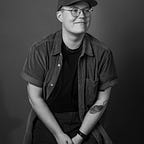UX is everywhere… Even in the Office!
This is the first article of a series where I will analyze scenes or plot points in T.V. shows or movies that are directly related to user experience design.
I love UX design and I love TV. Since finishing a UX bootcamp in 2020, I have started to observe principles that I learned about in almost every facet of my life. One of those is in the TV shows that I watch (and sometimes rewatch!). The first example that I noticed was while I was rewatching the US version of The Office and Pam decided to make a chore wheel. Sounds easy enough, right?
Pam’s UX Design Process
Empathize
Pam walks into the office one morning to discover piles and piles of trash on the floors of the office. It is clear that for whatever reason, her coworkers do not have an issue with this because it doesn’t seem like anyone is doing anything about it. Pam is the office manager and it’s not her job to clean up after everyone, but she does feel the need to address this problem for everyone’s health and safety.
Define
Pam’s Problem Statement: We, the employees of the Scranton branch of Dunder Mifflin, need to clean our own office space in order to compensate for a month without custodial services (the custodian is on vacation and the building owner is too cheap to temporarily hire someone else).
Proposed solution: Chore wheel
Design:
V1
- UI: Color scheme consists of neutrals and muted colors
- Materials used: Cardboard, colored sharpies, colored pencils, thumb tack
- Content: Names of chores and names of everyone in the office
- Functionality: Every morning you move the wheel one square to see what chore you have for the day
- Results from testing: Unanimous response from coworkers was that the wheel doesn’t spin and is therefore not fun
V2
- UI: Larger type and bolder, more eye-catching title
- Content: It only has chores
- Functionality: Since the names were removed, only one person spins it at a time. Whichever chore that person gets they would have to do that day
- Materials used: Original illustrations of chores on printer paper, mounted on cardboard, colored construction paper for the title, sharpie taped to a solid surface as pointer
- Results from testing: People are happier that it now spins, but they perceive it as solely focused on doing work
Final Version
- UI: Way more colorful! Larger wheel, interesting fonts, funny photos of people, lights, glitter, and many textures
- Content: It has prizes like “ten bucks” or “manager for an hour”, penalties like “no internet” or “Stanley gets your lunch”, and a tiny wheel that does actually have chores on it
- Functionality: One person spins at a time, you either get a prize or a penalty
- Materials used: Wood, glitter paper, digital illustrations, collage, LED lights, curled ribbon, a glittery gold pointer
- Results from testing: People love it! It is a fun way to pass the time while being at work, and every so often someone gets the “tiny wheel” which has chores on it, and they do the chores because they are perceived to be part of the game (i.e. a penalty)
Test and Redesign:
Pam gathers everyone into the conference room for testing. Pam essentially runs a focus group to have people test her designs and based off the feedback she receives each time she goes back to work to develop the most effective product she can.
During usability testing with her coworkers, Pam observes that versions 1 and 2 of the chore wheel are not fun enough. “I don’t think you know how wheels work…” says Kevin, perplexed that Pam would even make a wheel that doesn’t spin. While it seems she was disappointed that her original version wasn’t good enough (she had clearly spent a lot of time on it already), she listened to her end users and took their feedback into account. Pam’s first major edit was that people wanted it to spin. They wanted more interaction than the MVP was offering (just assigning chores). After making this edit, however, it was clear that spinning wasn’t people’s only major issue with the chore wheel. People also wanted showmanship, drama, and silliness. Only by adding these elements was she able to solve the original problem.
“I’ve been through several rounds of development with the team, and here’s where we stand with the chore wheel: We’ve got prizes! Ten bucks, candy bar, manager for an hour, BUT there are also penalties like no internet, Stanley gets your lunch. The one thing that is not on the chore wheel is chores, but they were right — it’s more fun this way. The tiny wheel actually does have chores…It’s so cute no one seems to mind!”
— Pam Beesly
Takeaways:
- An empathetic researcher is one who follows the lead of the user and not one who bases designs solely on their own assumptions.
- Total time spent working on a project does not equate to how effective the product will be, especially if the process does not include testing.
- Chores stink, but utilizing principles of gamification can get people to do them!
- Glitter makes (almost) everything better.
